
Olafsvik: Iceland's Hidden Coastal Gem
Discover Olafsvik: A charming coastal village in Iceland offering breathtaking views, rich maritime heritage, and easy access to Snæfellsjökull National Park.
Nestled on the western coast of Iceland, Olafsvik is a quaint fishing village that promises a unique and tranquil experience for travelers seeking natural beauty and cultural richness. With its scenic landscapes, charming harbor, and proximity to Snæfellsjökull National Park, Olafsvik offers a perfect blend of adventure and relaxation. Olafsvik's stunning coastal views are a must-see. The town is surrounded by dramatic cliffs and the majestic Snæfellsjökull glacier, which serves as a backdrop to the picturesque fishing boats dotted along the harbor. The clear, crisp air and the sound of the waves crashing against the shore create a serene atmosphere that is ideal for unwinding and enjoying the natural wonders of Iceland. For those interested in history and culture, Olafsvik does not disappoint. The town is home to the Pakkhús Museum, which provides insights into the region's maritime heritage and the lives of the local fishermen. Visitors can also explore the charming old town area, where they can find traditional Icelandic architecture and local artisan shops selling unique handicrafts. Outdoor enthusiasts will find plenty to do in and around Olafsvik. The nearby Snæfellsjökull National Park offers a range of activities, from hiking and glacier tours to bird watching and exploring lava fields. The park is also home to the iconic Snæfellsjökull volcano, famously featured in Jules Verne's novel 'Journey to the Center of the Earth'. Whale watching tours are another popular activity, providing an opportunity to see these magnificent creatures up close in their natural habitat.
Local tips in Olafsvik
- Visit during the summer months for milder weather and longer daylight hours, perfect for exploring the natural surroundings.
- Bring waterproof clothing and sturdy footwear, as the weather can be unpredictable, and many attractions involve outdoor activities.
- Try the local seafood dishes at one of the town's restaurants for a true taste of Icelandic cuisine.
- Book a glacier tour in advance to ensure availability, especially during peak tourist season.
- Consider renting a car to explore the wider Snæfellsnes Peninsula at your own pace.
Olafsvik: Iceland's Hidden Coastal Gem
Nestled on the western coast of Iceland, Olafsvik is a quaint fishing village that promises a unique and tranquil experience for travelers seeking natural beauty and cultural richness. With its scenic landscapes, charming harbor, and proximity to Snæfellsjökull National Park, Olafsvik offers a perfect blend of adventure and relaxation. Olafsvik's stunning coastal views are a must-see. The town is surrounded by dramatic cliffs and the majestic Snæfellsjökull glacier, which serves as a backdrop to the picturesque fishing boats dotted along the harbor. The clear, crisp air and the sound of the waves crashing against the shore create a serene atmosphere that is ideal for unwinding and enjoying the natural wonders of Iceland. For those interested in history and culture, Olafsvik does not disappoint. The town is home to the Pakkhús Museum, which provides insights into the region's maritime heritage and the lives of the local fishermen. Visitors can also explore the charming old town area, where they can find traditional Icelandic architecture and local artisan shops selling unique handicrafts. Outdoor enthusiasts will find plenty to do in and around Olafsvik. The nearby Snæfellsjökull National Park offers a range of activities, from hiking and glacier tours to bird watching and exploring lava fields. The park is also home to the iconic Snæfellsjökull volcano, famously featured in Jules Verne's novel 'Journey to the Center of the Earth'. Whale watching tours are another popular activity, providing an opportunity to see these magnificent creatures up close in their natural habitat.
When is the best time to go to Olafsvik?
Iconic landmarks you can’t miss
Saxhóll Crater
Discover the breathtaking Saxhóll Crater, a stunning volcanic landmark in Iceland, perfect for hiking and exploring nature's beauty.

Sker Restaurant
Experience the best of Icelandic cuisine at Sker Restaurant, where fresh ingredients meet breathtaking coastal views in Ólafsvík.

Campsite Ólafsvík
Discover tranquility and adventure at Campsite Ólafsvík, where Iceland's stunning landscapes await your exploration and relaxation.

Svöðufoss
Explore the breathtaking Svöðufoss waterfall, an iconic natural wonder in Iceland known for its stunning beauty and serene atmosphere.

Við Hafið Guesthouse/Hostel
Experience the charm of Ólafsvík at Víð Hafið Guesthouse, your cozy base for exploring the stunning Snæfellsnes Peninsula.

Bæjarfoss
Explore the breathtaking beauty of Bæjarfoss, a stunning waterfall in Iceland's Western Region, known for its captivating landscapes and peaceful ambiance.
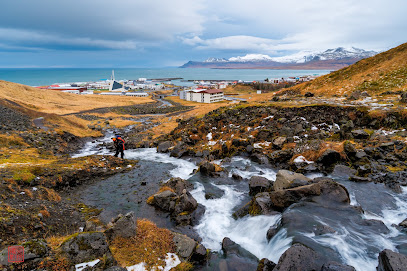
Ólafsvíkurkirkja
Discover the serene beauty of Ólafsvíkurkirkja, a stunning Lutheran church surrounded by Iceland's breathtaking landscapes.

Sönghellir Cave
Discover the enchanting Sönghellir Cave in Iceland, a historical landmark where nature's beauty meets rich folklore and captivating history.

Reks
Discover the essence of Icelandic cuisine at Reks in Ólafsvík, featuring fresh local ingredients and a warm, inviting atmosphere for every traveler.
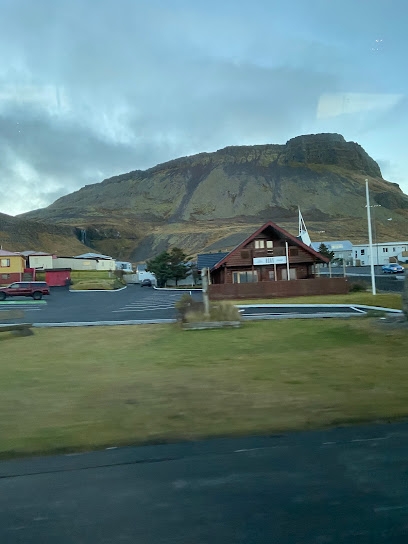
Hotel Olafsvik
Experience comfort and breathtaking landscapes at Hotel Olafsvik, your ideal base for exploring the wonders of Iceland's Snæfellsnes Peninsula.

Bikers Paradise
Discover Bikers Paradise, a unique hotel in Ólafsvík, Iceland, tailored for motorcycle enthusiasts and adventure seekers alike.

Bugsfoss
Explore the serene beauty of Bugsfoss, a picturesque scenic spot in Ólafsvík, Iceland, offering breathtaking views and a tranquil escape into nature.

Tindur Boat SH-179
Discover Tindur Boat SH-179: A masterful sculpture in Ólafsvík showcasing Iceland's deep maritime heritage and artistry against stunning coastal scenery.

Gufuskálar
Discover the maritime heritage and breathtaking landscapes at Gufuskálar, a historical landmark near Ólafsvík, Iceland.

Ólafsvík View Point
Experience the breathtaking beauty of Ólafsvík View Point, where stunning vistas of rugged cliffs and the ocean await you in the heart of Iceland.

Unmissable attractions to see
Kirkjufellsfossar
Discover the breathtaking beauty of Kirkjufellsfossar, where cascading waters meet the iconic Kirkjufell Mountain in a stunning Icelandic landscape.

Búðakirkja
Discover the mesmerizing Búðakirkja, Iceland's iconic black church surrounded by breathtaking landscapes and rich cultural heritage.

Ytri Tunga
Explore the stunning coastline of Ytri Tunga, a beautiful beach in Iceland known for its golden sands, marine wildlife, and breathtaking landscapes.

Saxhóll Crater
Experience the breathtaking beauty and geological wonders at Saxhóll Crater, a must-visit tourist attraction in Iceland's stunning landscape.

Vatnshellir Cave
Discover the breathtaking beauty of Vatnshellir Cave in Snæfellsjökull National Park, a geological marvel that offers a glimpse into Iceland's volcanic past.

Djúpalónssandur beach
Experience the breathtaking landscapes and rich history of Djúpalónssandur Beach on Iceland's stunning Snæfellsnes Peninsula.

Gatklettur
Experience the captivating beauty of Gatklettur, an iconic rock formation on Iceland's southern coast, perfect for nature lovers and photographers.

Bjarnarhöfn Shark Museum
Explore the captivating world of sharks at Bjarnarhön Shark Museum, a unique heritage and science museum in beautiful Iceland.

Stone Bridge
Explore the breathtaking Stone Bridge in Arnarstapi, a stunning natural marvel showcasing Iceland's dramatic coastal beauty and rich landscapes.
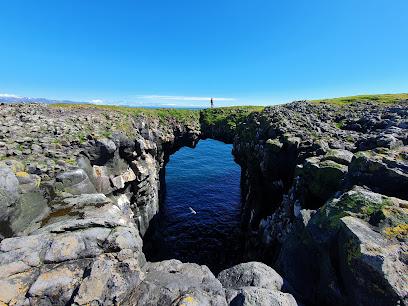
Skarðsvík Beach
Discover the serene beauty of Skarðsvík Beach, a hidden gem on Iceland's Snæfellsnes Peninsula, perfect for relaxation and adventure.

Lóndrangar View Point
Explore the stunning Lóndrangar View Point with its breathtaking basalt cliffs and dramatic ocean views, perfect for photography and nature lovers.

Selvallafoss
Experience the enchanting beauty of Selvallafoss Waterfall in Iceland, where nature's stunning cascades meet serene surroundings, perfect for relaxation and photography.

Svöðufoss
Discover the breathtaking beauty of Svöðufoss, a stunning waterfall in Ólafsvík, Iceland, surrounded by lush landscapes and dramatic cliffs.

Ölkelduvatn Mineral Spring
Discover the enchanting Ölkelduvatn Mineral Spring, a historical landmark in Iceland renowned for its crystal-clear waters and stunning natural beauty.

Malarrif Lighthouse
Experience breathtaking ocean views and the rugged charm of Iceland at Malarrif Lighthouse in scenic Hellnar.

Essential places to dine
Bjargarsteinn Mathús
Experience exquisite Icelandic cuisine at Bjargarsteinn Mathús in Grundarfjörður – where every dish tells a story.

Sker Restaurant
Experience authentic Icelandic cuisine at Sker Restaurant in Ólafsvík – where fresh local ingredients meet stunning views.

Stapinn
Discover Stapinn in Arnarstapi - where culinary excellence meets breathtaking coastal views for an unforgettable dining experience.
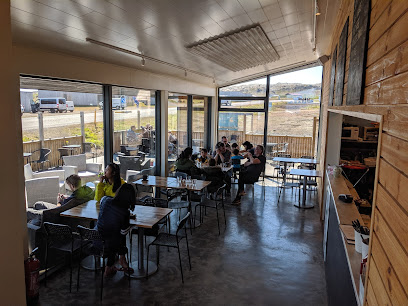
Arnarstapi Center and Snjófell Restaurant
Experience exquisite dining at Arnarstapi Center and Snjófell Restaurant, where local flavors meet breathtaking Icelandic landscapes.

Samkomuhúsið Arnarstapa
Experience exquisite Icelandic cuisine amidst breathtaking views at Samkomuhúsið Arnarstapa – a culinary gem in the heart of nature.

Við Hafið Guesthouse/Hostel
Discover comfort and community at Við Hafið Guesthouse in Ólafsvík - your gateway to Iceland's stunning Snæfellsnes Peninsula.

Matarlist
Experience authentic Icelandic cuisine at Matarlist in Hellissandur – where local flavors meet warm hospitality.

FRISTA Food Truck Arnarstapi
Experience fresh flavors and stunning views at FRISTA Food Truck in Arnarstapi – a culinary haven amidst Iceland's breathtaking landscapes.
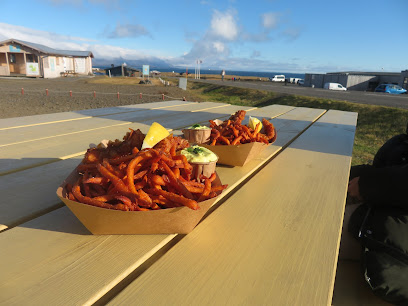
Viðvík Restaurant
Discover exceptional Icelandic cuisine at Viðvík Restaurant in Hellissandur—where fresh ingredients meet exquisite flavors.

Reks
Discover exquisite Icelandic cuisine at Reks in Ólafsvík – where fresh local ingredients meet warm hospitality.

Arnarbær
Experience authentic Icelandic cuisine at Arnarbær in beautiful Arnarstapi—where local flavors meet breathtaking views.

Hotel Olafsvik
Discover the charm and comfort of Hotel Olafsvik - your gateway to Iceland's stunning Snæfellsnes Peninsula.

Bikers Paradise
Discover Bikers Paradise in Ólafsvík: A biker-friendly hotel surrounded by stunning Icelandic landscapes, perfect for adventure seekers and relaxation.

Markets, malls and hidden boutiques
Sker Restaurant
Discover the authentic taste of Iceland at Sker Restaurant, where local ingredients meet breathtaking coastal views.

Valeria Specialty Coffee & souvenirs
Discover the rich flavors of Iceland at Valeria Specialty Coffee & Souvenirs, where artisanal brews meet unique local gifts in a cozy atmosphere.

Við Hafið Guesthouse/Hostel
Discover the unique charm of Við Hafið Guesthouse, your cozy base for exploring the stunning landscapes of Ólafsvík and the Snæfellsnes Peninsula.

Bæjarfoss
Experience the serene beauty of Bæjarfoss, a stunning waterfall in Iceland's Western Region, perfect for nature lovers and photography enthusiasts alike.

Reks
Experience the essence of Icelandic cuisine at Reks in Ólafsvík, where local ingredients meet authentic flavors in a cozy atmosphere.

Kassinn
Discover local flavors and essentials at Kassinn, Ólafsvík's premier supermarket offering a taste of Icelandic culture.

Orkan
Discover Orkan, the 24/7 gas station in Ólafsvík, providing fuel and snacks for travelers exploring Iceland's stunning Snæfellsnes Peninsula.

N1 Ólafsvík
Discover N1 Ólafsvík, the essential gas station and convenience store for travelers exploring Iceland's stunning Snæfellsnes Peninsula.

Bugsfoss
Experience the breathtaking beauty of Bugsfoss, a stunning waterfall and scenic spot in the heart of Iceland's Ólafsvík.

G. Hansen
Discover G. Hansen in Ólafsvík, a reliable auto repair shop blending expert service with local Icelandic charm.

Snjóhúsið outdoor shop & climbing gym
Discover Snjóhúsið in Grundarfjörður: Your ultimate destination for outdoor gear and climbing adventures amidst Iceland's breathtaking landscapes.
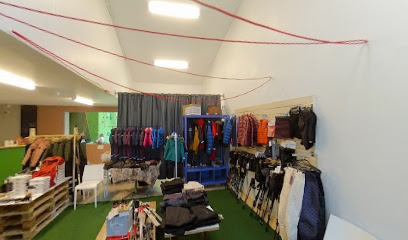
Útgerðin - Concept Store & Wine Room
Explore the vibrant blend of art, wine, and local crafts at Útgerðin in Hellissandur, where Icelandic culture comes alive.

Vínbúðin
Discover a diverse selection of local and international spirits at Vínbúðin, Iceland's essential state liquor store in Ólafsvík.

Gallerí Jökull
Explore Gallerí Jökull in Ólafsvík for authentic Icelandic handicrafts, from woolen gifts to local art, capturing the essence of Iceland's rich heritage.

Pakkhúsið
Explore the maritime history of Ólafsvík at Pakkhúsið Museum, where Iceland's fishing traditions come to life through captivating exhibits.
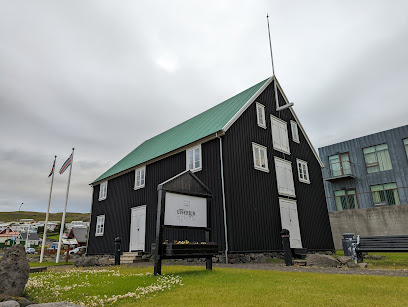
Essential bars & hidden hideouts
Sker Restaurant
Experience the best of Icelandic cuisine at Sker Restaurant in Ólafsvík, where fresh local ingredients meet stunning coastal views.

Gilbakki
Experience the cozy warmth and delightful flavors of Gilbakki Café in Hellissandur, Iceland's scenic gem.

Við Hafið Guesthouse/Hostel
Experience the warmth and charm of Iceland at Við Hafið Guesthouse, your cozy base in Ólafsvík for exploring the stunning Snæfellsnes Peninsula.
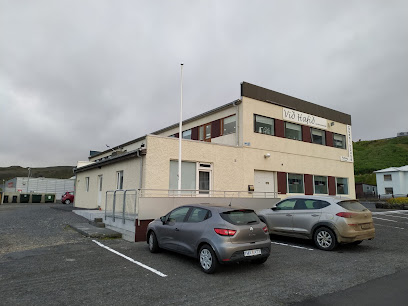
Bæjarfoss
Discover Bæjarfoss, a stunning waterfall in Iceland offering breathtaking views, peaceful hikes, and a unique connection to nature.

Viðvík Restaurant
Discover the exquisite flavors of Iceland at Viðvík Restaurant, where culinary artistry meets stunning landscapes for an unforgettable dining experience.

Ólafsvíkurkirkja
Discover the tranquility of Ólafsvíkurkirkja, an architectural gem in Ólafsvík, where nature meets Icelandic culture in serene harmony.

Reks
Experience authentic Icelandic cuisine at Reks in Ólafsvík, where fresh local ingredients meet breathtaking views.

Hotel Olafsvik
Experience the serene beauty of Ólafsvík with a stay at Hotel Olafsvik, the perfect base for your Icelandic adventure.

Kassinn
Explore Kassinn in Ólafsvík for a taste of local Icelandic products, fresh produce, and essential supplies during your Icelandic adventure.

Orkan
Fuel your adventures at Orkan, Ólafsvík's essential gas station, offering snacks and local products for your journey through Iceland's stunning landscapes.

Bugsfoss
Experience the breathtaking beauty of Bugsfoss, a serene waterfall destination near Ólafsvík, perfect for nature lovers and photographers alike.

Útgerðin - Concept Store & Wine Room
Explore Útgerðin, a delightful concept store and wine room in Hellissandur, showcasing local artistry and an exquisite selection of wines.
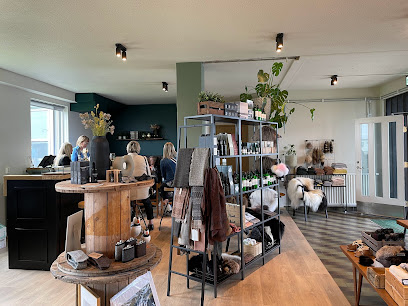
Gallerí Jökull
Explore the vibrant world of Icelandic handicrafts at Gallerí Jökull in Ólafsvík, where local artistry comes to life.

N1
Explore N1 in Ólafsvík, your essential stop for local goods and souvenirs while discovering the beauty of Iceland's Snæfellsnes Peninsula.

Travel experiences inspired by this city
Explore more travel diariesLocal Phrases
-
- HelloHalló
[ha-tloh] - GoodbyeBless
[bles] - YesJá
[ya] - NoNei
[nay] - Please/You're welcomeTakk fyrir
[tahk feer-ir] - Thank youTakk
[tahk] - Excuse me/SorryAfsakið
[af-sah-kith] - How are you?Hvað segir þú?
[kvath se-yir thoo] - Fine. And you?Í lagi. En þú?
[ee la-gi en thoo] - Do you speak English?Talar þú ensku?
[ta-lar thoo ens-koo] - I don't understandÉg skil ekki
[yeg skil ek-ki]
- HelloHalló
-
- I'd like to see the menu, pleaseÉg vil sjá matseðilinn, takk
[yeg vil syah mat-se-thil-inn tahk] - I don't eat meatÉg borða ekki kjöt
[yeg bor-tha ek-ki k-yot] - Cheers!Skál!
[skowl] - I would like to pay, pleaseÉg vil greiða, takk
[yeg vil gray-tha tahk]
- I'd like to see the menu, pleaseÉg vil sjá matseðilinn, takk
-
- Help!Hjálp!
[hyowlp] - Go away!Farðu í burtu!
[far-thoo ee bur-too] - Call the Police!Hringdu í lögreglu!
[hring-thoo ee lo-greh-lu] - Call a doctor!Hringdu í læknir!
[hring-thoo ee liek-nir] - I'm lostÉg er týndur
[yeg air teen-thur] - I'm illÉg er veikur
[yeg air vay-kur]
- Help!Hjálp!
-
- I'd like to buy...Ég vil kaupa...
[yeg vil koy-pa] - I'm just lookingÉg er bara að skoða
[yeg air bara ath skotha] - How much is it?Hvað kostar það?
[kvath koh-star thah] - That's too expensiveÞað er of dýrt
[thah air ov deert] - Can you lower the price?Getur þú lækkað verðið?
[ge-thur thoo lai-kath ver-thith]
- I'd like to buy...Ég vil kaupa...
-
- What time is it?Hvað er klukkan?
[kvath air kloo-kahn] - It's one o'clockKlukkan er eitt
[kloo-kahn air ay-th] - Half past (10)Hálftíu (10)
[howlft-thew (10)] - MorningMorgun
[mor-gun] - AfternoonSíðdegis
[seeth-the-yeesh] - EveningKvöld
[k-vuhlt] - YesterdayÍ gær
[ee gyei-r] - TodayÍ dag
[ee dahg] - TomorrowÁ morgun
[ow mor-gun] - 1Eitt
[ay-th] - 2Tvö
[t-vuh] - 3Þrjú
[thryoo] - 4Fjögur
[fyoh-gur] - 5Fimm
[fim] - 6Sex
[sehx] - 7Sjö
[syoh] - 8Átta
[ow-tha] - 9Níu
[nee-uh] - 10Tíu
[thee-uh]
- What time is it?Hvað er klukkan?
-
- Where's a/the...?Hvar er...
[kvar air] - What's the address?Hvað er heimilisfangið?
[kvath air hay-mil-is-fahn-gith] - Can you show me (on the map)?Getur þú sýnt mér (á kortinu)?
[ge-thur thoo seent mair (ow kort-inn-oo)] - When's the next (bus)?Hvenær kemur næsti (strætó)?
[kveh-nayr keh-mur nai-sti (stray-toh)] - A ticket (to ....)Miða (til ....)
[mee-tha (teel)]
- Where's a/the...?Hvar er...
History of Olafsvik
-
Olafsvik, located on the Snæfellsnes Peninsula, has been inhabited since the early days of Icelandic settlement. The town's name is derived from Saint Olaf, a Norwegian king and patron saint of Norway, reflecting the deep historical ties between Iceland and Norway. Archaeological evidence suggests that the area was settled as early as the 9th century, and it quickly became a vital fishing hamlet due to its proximity to rich fishing grounds.
-
During the medieval period, Olafsvik flourished as a key trading post. Its strategic location on the west coast of Iceland made it a crucial point for trade between Iceland and mainland Europe. Merchants from as far away as England, Denmark, and Germany would dock in Olafsvik to trade goods such as dried fish, wool, and timber. The town's bustling harbor became a melting pot of cultures and languages, contributing to its rich historical tapestry.
-
The 18th and 19th centuries saw significant advancements in Olafsvik's fishing industry. The introduction of decked vessels and improved fishing techniques allowed for larger catches and more efficient operations. By the mid-19th century, Olafsvik had established itself as one of Iceland's primary fishing centers. The town's economy thrived on the export of cod, herring, and other seafood, which were shipped to European markets.
-
Olafsvik Church, an iconic landmark, was built in 1967 and designed by architect Rögnvaldur Ólafsson. Known for its modernist architecture, the church features a unique triangular structure that symbolizes the peaks of the surrounding Snæfellsnes mountains. The church's design and location make it a popular site for both worship and tourism, adding to the town's cultural heritage.
-
World War II brought significant changes to Olafsvik, as Iceland was strategically important for the Allies. The construction of military facilities and the influx of foreign troops led to rapid modernization. Post-war, the town benefited from improved infrastructure and technological advancements. The fishing industry continued to evolve with the introduction of motorized boats and advanced processing facilities, ensuring Olafsvik's place in the modern era.
-
Olafsvik is known for its vibrant cultural scene, highlighted by annual festivals such as the Olafsvik Festival. This celebration showcases local music, dance, and traditional Icelandic cuisine, drawing visitors from across the country and beyond. These festivals not only promote local culture but also strengthen community bonds and preserve the town's rich heritage.
-
In recent decades, Olafsvik has become a popular destination for tourists seeking the natural beauty of the Snæfellsnes Peninsula. The town offers access to stunning landscapes, including the Snæfellsjökull National Park, with its iconic glacier and diverse wildlife. Tourism has become a vital part of Olafsvik's economy, complementing its traditional fishing industry and contributing to its cultural preservation.
Olafsvik Essentials
-
Olafsvik is located on the northern side of the Snaefellsnes Peninsula in western Iceland. The nearest international airport is Keflavik International Airport, approximately 220 kilometers away. From Keflavik, you can rent a car and drive to Olafsvik, which typically takes around 3 to 4 hours. There are also bus services available from Reykjavik to Olafsvik. Another option is to take a domestic flight to Reykjavik Domestic Airport and then drive or take a bus from there.
-
Olafsvik is a small town, and most attractions are within walking distance. For exploring the surrounding areas, renting a car is highly recommended as it provides the most flexibility. Local bus services are available, but they may not run very frequently. Taxis can also be found, but pre-booking is advisable, especially during the off-peak season.
-
The official currency in Iceland is the Icelandic Krona (ISK). Credit and debit cards are widely accepted in Olafsvik, including in hotels, restaurants, and shops. It is advisable to carry some cash for smaller establishments and remote areas where card facilities may not be available. ATMs are accessible in the town for cash withdrawals.
-
Olafsvik is generally a very safe destination for tourists. Crime rates are low, and violent crime is extremely rare. However, it is always wise to take standard precautions such as not leaving valuables unattended and being cautious in unfamiliar areas. There are no specific high-crime areas targeting tourists in Olafsvik.
-
In case of an emergency, dial 112 for immediate assistance, which is the emergency number for police, fire, and medical services. The town has a local health clinic for minor medical issues, but for serious health concerns, you may need to travel to a larger hospital in Reykjavik. It is recommended to have travel insurance that covers medical emergencies.
-
Fashion: Do dress in layers and be prepared for rapidly changing weather. Waterproof and windproof clothing is essential. Avoid overly revealing clothing as the weather can be quite chilly. Religion: Do respect local customs if visiting churches or religious sites. Public Transport: Do be respectful and quiet on public transport. Greetings: Do greet people with a friendly 'Halló' or 'Góðan daginn'. Handshakes are also common. Eating & Drinking: Do try local Icelandic dishes such as fresh fish and lamb. Don’t be surprised if you are offered traditional foods like fermented shark.
-
To experience Olafsvik like a local, visit the local fish market early in the morning to see the daily catch and even buy some fresh seafood. Engaging with locals at the town’s cafes is a great way to hear stories about the area’s history and culture. Don’t miss exploring the nearby Snaefellsjokull National Park, which offers stunning landscapes and hiking opportunities. For a unique experience, take a boat tour to see the diverse marine life, including whales and seals.
Nearby Cities to Olafsvik
-
Things To Do in Stykkisholmur
-
Things To Do in Borgarnes
-
Things To Do in Keflavik
-
Things To Do in Reykjavik
-
Things To Do in Kopavogur
-
Things To Do in Hafnarfjordur
-
Things To Do in Grindavik
-
Things To Do in Isafjordur
-
Things To Do in Hveragerdi
-
Things To Do in Selfoss
-
Things To Do in Blonduos
-
Things To Do in Saudarkrokur
-
Things To Do in Dalvik
-
Things To Do in Akureyri
-
Things To Do in Vik













